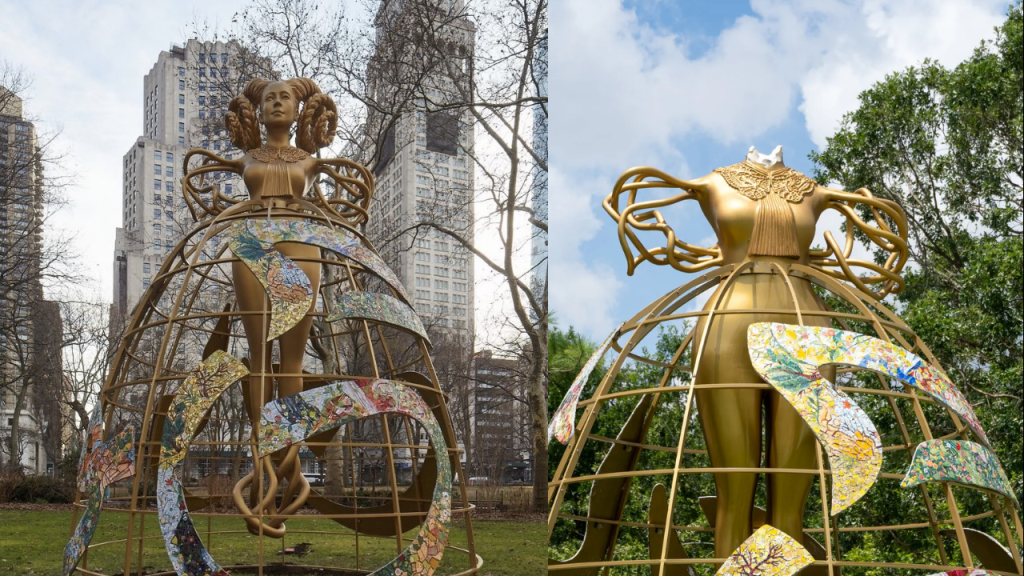Incident Overview
Early on July 8, amidst Hurricane Beryl, the 18-foot-tall bronze statue by Shahzia Sikander at the University of Houston was vandalised, with the sculpture’s head deliberately removed.
Campus Response
Kevin Quinn, the university’s media relations director, expressed disappointment and confirmed that the damage, suspected to be intentional, is under investigation by the University of Houston Police Department.
Controversy and Criticism
The statue, initially displayed at Madison Square Park in New York City, faced criticism upon arrival at Houston, particularly from anti-abortion group Texas Right to Life. Their protests led to the cancellation of planned events and discussions related to the artwork.
Artist’s Perspective
Shahzia Sikander clarified that the sculpture’s design, including braided hair forming horns and a lacy collar reminiscent of Ruth Bader Ginsburg’s attire, is not connected to Satanism but rather symbolises strength and wisdom.
Impact and Future Plans
Sikander, describing the vandalism as a hateful act, has opted not to repair the statue traditionally but instead intends to create new artworks inspired by the incident, challenging the narrative of the damage.
Artistic Legacy
Known for her international exhibitions and recipient of a MacArthur “genius” grant, Sikander’s work continues to provoke discussion, with a current survey at the Venice Biennale.
Recovery Efforts
Conservators have been consulted for repairs, while the university and Sikander aim to address the damage promptly while considering the broader implications of the incident.





